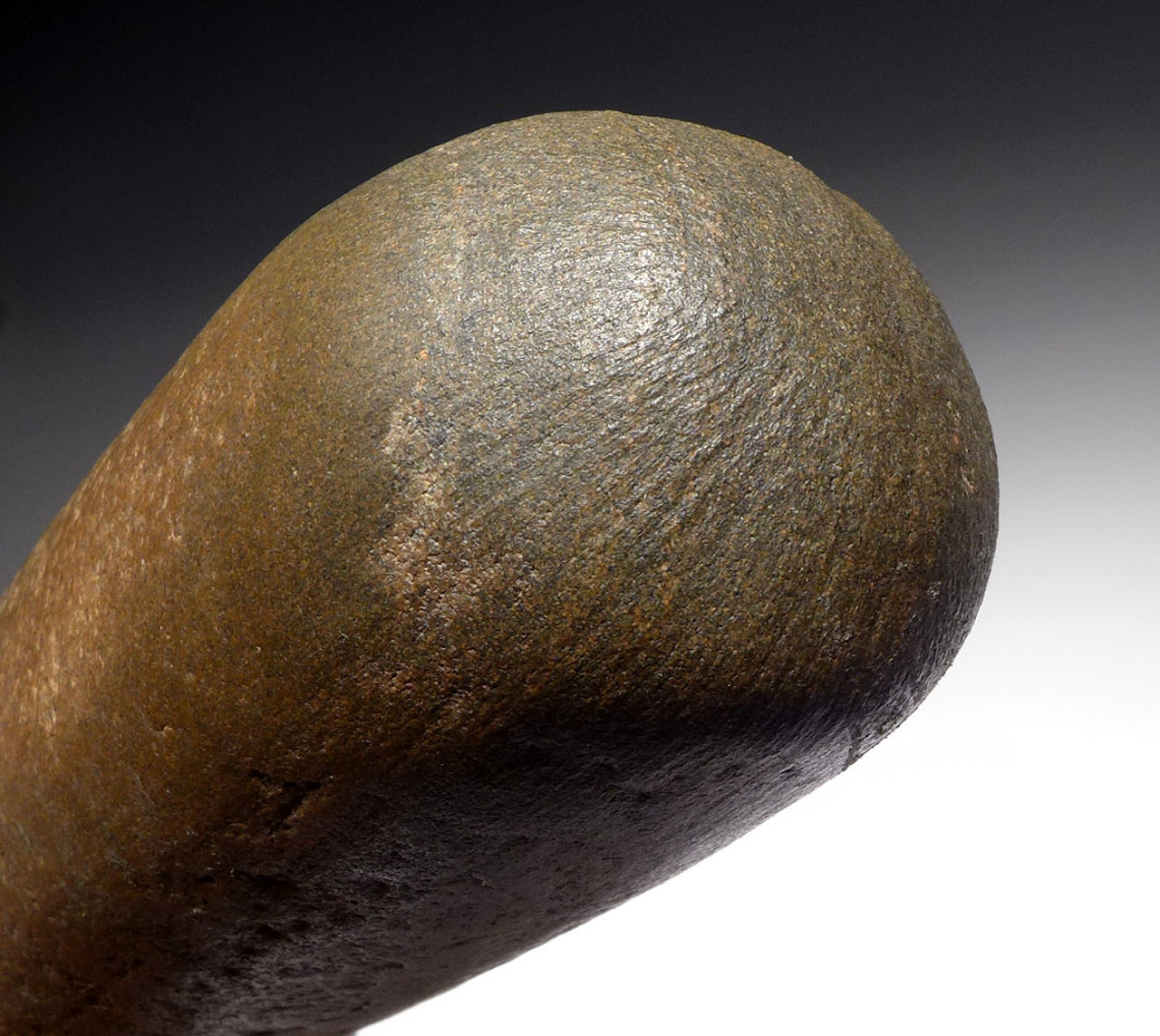Product Description
SEE MORE AFRICAN NEOLITHIC ARTIFACTS
This is true museum-class cylindrical pestle rubbing mill stone is the largest, complete example we have ever seen. It comes from the African Capsian Neolithic Culture and rivals the cylinder pestles of the African Tenerian Neolithic Culture. What is impressive is that it is without ANY modern or ancient damage. This pestle shows superb pecking and use wear with moderately flat facets on the long faces. The ends show the original ancient grinding marks which have been covered in a glossy "Desert Varnish" wind sheen patina. Masterful pecking along the entire length shows how the stone was shaped, thousands of years ago. A pestle like this would have been used on a huge flat grinding mill and in some cases, even on prepared stationary grinding stones used in the period. The grain would have been placed on the mortar and with two hands on each end, this pestle would have been rubbed back and forth over the grain to crush and grind it. This is an essential centerpiece of any collection of this Neolithic culture as this is what the Neolithic was all about - PREPARING food from cultivated / domesticated crops instead of relying on gathering naturally-occurring plants for food.
WITH OUR HIGHEST RECOMMENDATION! Perfect to display amidst other tools and weapons of this period! This NEOLITHIC OF CAPSIAN TRADITION artifact was found on an exposed African Neolithic site in the Sahara Desert in Northwest Africa. It was made and used by Neolithic humans (Homo sapiens sapiens) from the time of 8000 B.C to 2700 B.C..
WARNING: Authentic large African Neolithic mills have become terribly rare in today's market. Their large size have made them easy to spot by nomads and all of the Northern Sahara has been picked clean of these Neolithic mills over the past 20 years. In auctions, online sellers, shows and Ebay, fakes dominate the market. In our travels to North Africa as far back as 15 years ago, we saw a tremendous quantity of convincing fakes being produced for the collector market. One way to tell is to wash the mill off with liquid dishwasing soap, hot water and a scrub brush. True mills with thousands of years of impacted sediment, wind erosion and mineral encrustations, will be impossible to scrub clean and under magnification, will have deep MICROSCOPIC crevices stained and impacted with minerals. Fakes will not have this. The sheer number of fake stone tools being produced in Morocco, Mali, Mauritania and Algeria, for example, is staggering, and this junk routinely makes its way to the market every year.
 US DOLLAR
US DOLLAR
 EURO
EURO
 AUSTRALIAN DOLLAR
AUSTRALIAN DOLLAR
 CANADIAN DOLLAR
CANADIAN DOLLAR
 POUND STERLING
POUND STERLING
















